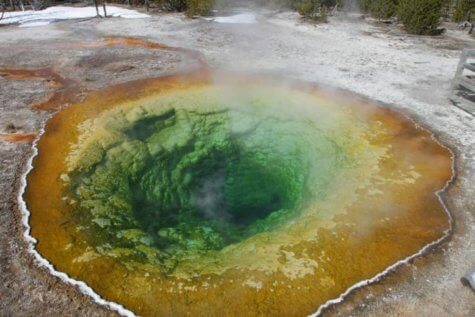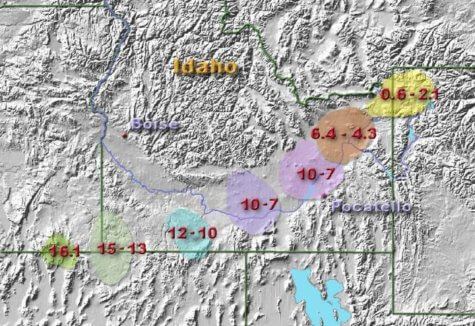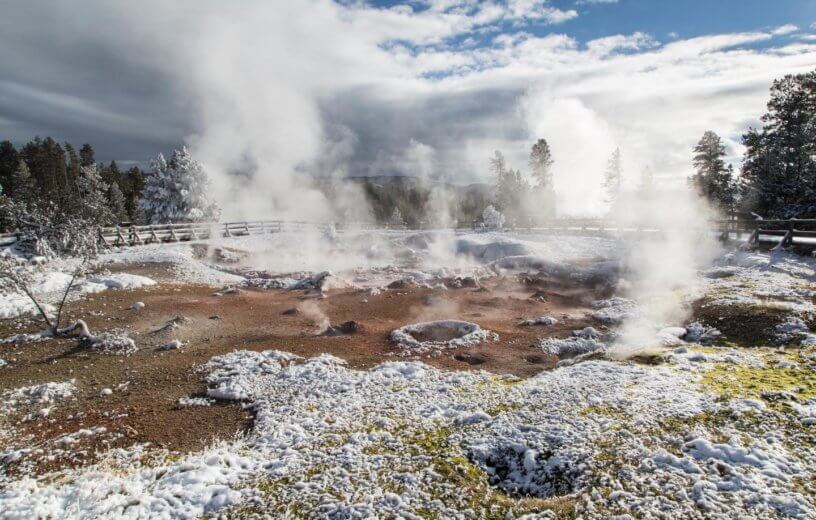BOULDER, Colo. — A volcanic super-eruption is among the most intense and extreme natural events known to Earth. Luckily for us, they don’t happen very often. Now, evidence of two ancient volcanic super-eruptions linked to the Yellowstone hotspot track, one of which appears to be that area’s most cataclysmic event ever, suggest that volcanic activity in Yellowstone National Park is waning and decreasing with time.
The Yellowstone hotspot track fuels all of the famous mudpots, geysers, and fumaroles found within the popular tourist attraction.

Researchers, from both the British Geological Survey and the University of California, Santa Cruz, utilized a variety of methods including magnetic data, bulk chemistry, and radio-isotopic dates to analyze and correlate volcanic deposits spread throughout thousands of miles in the park.
“We discovered that deposits previously believed to belong to multiple, smaller eruptions were in fact colossal sheets of volcanic material from two previously unknown super-eruptions at about 9.0 and 8.7 million years ago,” says Thomas Knott, a volcanologist at the University of Leicester and the paper’s lead author, in a release.
“The younger of the two, the Grey’s Landing super-eruption, is now the largest recorded event of the entire Snake-River–Yellowstone volcanic province,” he adds. “Based on the most recent collations of super-eruption sizes it is one of the top five eruptions of all time.”
According to their calculations, the newly discovered Grey’s Landing eruption was likely 30 times larger than the previous record holder for biggest eruption (the Huckleberry Ridge Tuff eruption). This was a major ancient event that had a detrimental, long-lasting impact on the entire planet.
“The Grey’s Landing eruption enamelled an area the size of New Jersey in searing-hot volcanic glass that instantly sterilized the land surface,” Knott explains.
Suffice to say, anything and everything within close proximity of the eruption was immediately buried and subsequently “vaporized.”
“Particulates would have choked the stratosphere,” Knott describes, “raining fine ash over the entire United States and gradually encompassing the globe.”
So, when exactly did all this happen? As best researchers can tell, some time around the Miocene era (23–5.3 million years ago).
“These two new eruptions bring the total number of recorded Miocene super-eruptions at the Yellowstone–Snake River volcanic province to six,” Knott clarifies.

With this new information, it now appears that the “recurrence rate” of super-eruptions in Yellowstone during this era was roughly every 500,000 years. More recently, there have only been two super-eruptions in Yellowstone over the past 3 million years.
“It therefore seems that the Yellowstone hotspot has experienced a three-fold decrease in its capacity to produce super-eruption events,” Knott states. “This is a very significant decline.”
So, you probably don’t have to worry about an eruption in your lifetime. That is, unless you plan on living for another 900,000 years.
“We have demonstrated that the recurrence rate of Yellowstone super-eruptions appears to be once every 1.5 million years,” Knott explains. “The last super-eruption there was 630,000 years ago, suggesting we may have up to 900,000 years before another eruption of this scale occurs.”
All that being said, this science isn’t exact and nature is often unpredictable. So, Knott and his team still believe Yellowstone and its volcanic activity should be closely monitored moving forward.
The study is published in Geology.
Like studies? Follow us on Facebook!
